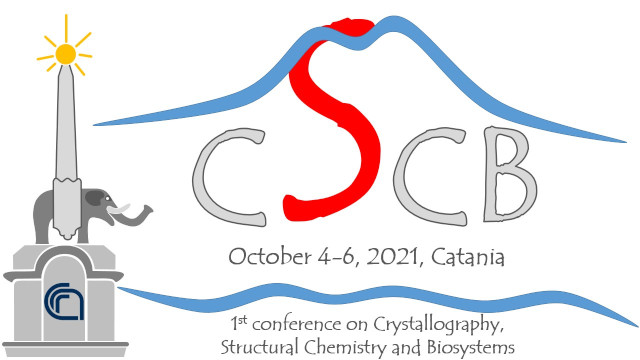Speaker
Description
Although the crystal structure solution from powder diffraction data is limited respect to the single crystal case, its interest has surprisingly increased in the last twenty-five years. The difficult chance to get a correct interpretation of the experimental powder diffraction pattern, due to peak overlap, background estimation, and preferred orientation, is addressed with improvement in modern instrumentation, as well as development of innovative theories and software.
Our research activity is mainly devoted to the solution by powder diffraction data of organic, inorganic, metal-organic crystal structures of different scientific and technological interest.
The process of structure solution starts from powder diffraction data collection by a Rigaku laboratory diffractometer (18Kw) equipped with an asymmetric Ge(111) monochromator and a silicon strip detector.
The core of the research activity is developing advanced methodological approaches and computational abilities aiming at successfully and automatically carrying out the full pathway of the solution process, from the indexation to the Rietveld refinement1.
Regarding the methodologies, we develop computational approaches using Direct Methods, working in the reciprocal space, and Simulated Annealing, working in the real space and both2. They have differences: Direct Methods are fast and require minimal information, depend on the efficiency of the pattern decomposition, on the experimental resolution and structure complexity. Simulated Annealing methods can be very slow and need additional information on the expected molecular geometry, are independent from the accuracy of the extracted structure factor moduli and do not need atomic resolution.
The decision on what should be the best solution strategy to apply, mainly depends on data quality, experimental resolution and peak overlap; structure complexity and/or degrees of freedom of the structure2.
The new methodological and computational procedures are implemented in the software EXPO3, free for academic institution, based on a user-friendly graphic interface, able to adopt default and non-default solution strategies, all innovative approaches for attaining the complete and correct crystal structure solution.
The different requested conditions and the most appropriate algorithm to apply for a successful powder solution by Direct Methods and Simulated Annealing with some examples, will be discussed.
References
1. International Tables for Crystallography, Volume H, Powder Diffraction; C.J. Gilmore, J.A. Kaduk, H. Schenk Eds., Wiley: New York, 2019, 978-1-118-41628-0
2. A. Altomare, N. Corriero, C. Cuocci, A. Falcicchio, R. Rizzi. (2019). Crystals, 2020, 10(1), 16.
3. A. Altomare, C. Cuocci, C. Giacovazzo, A. Moliterni, R. Rizzi, N. Corriero, A. Falcicchio. J. Appl. Cryst. 2013, 46, 1231.

